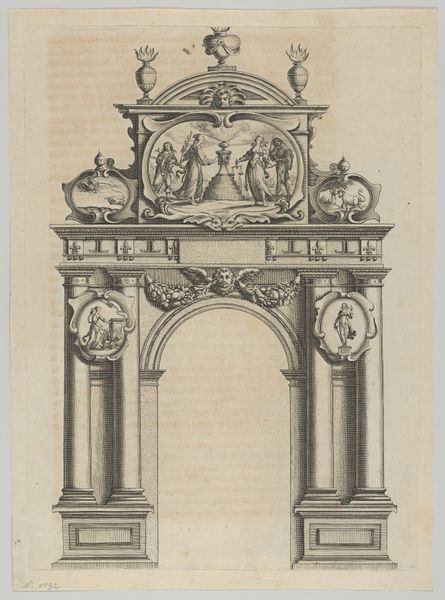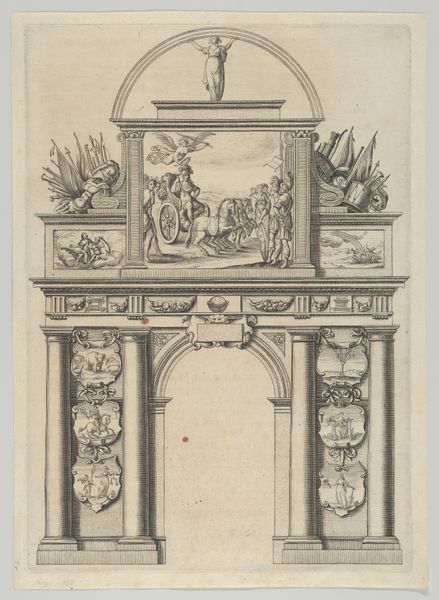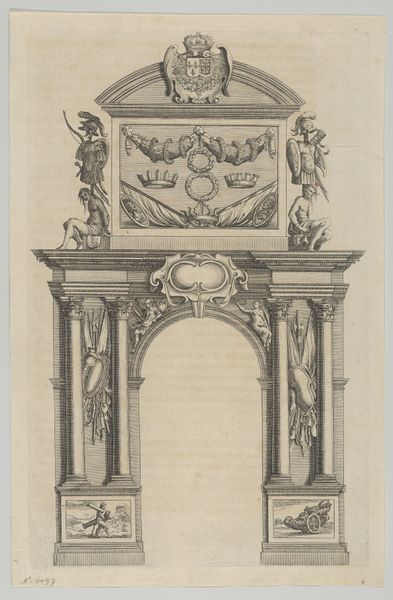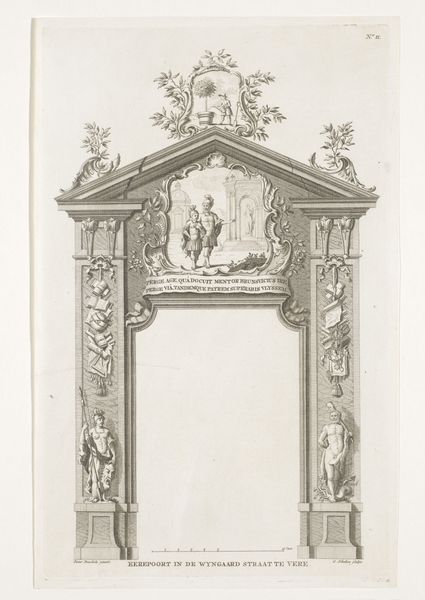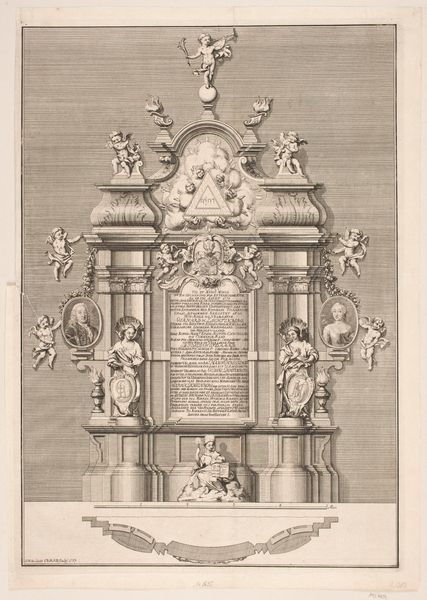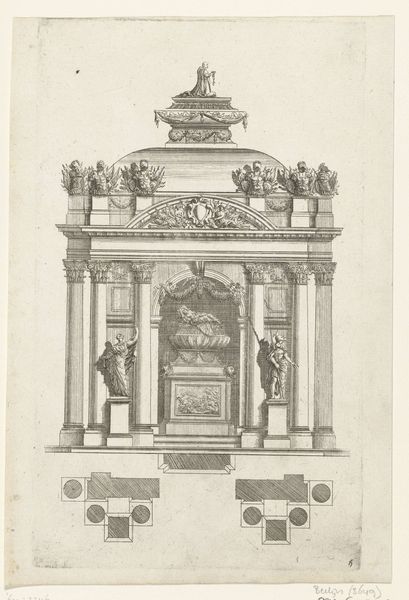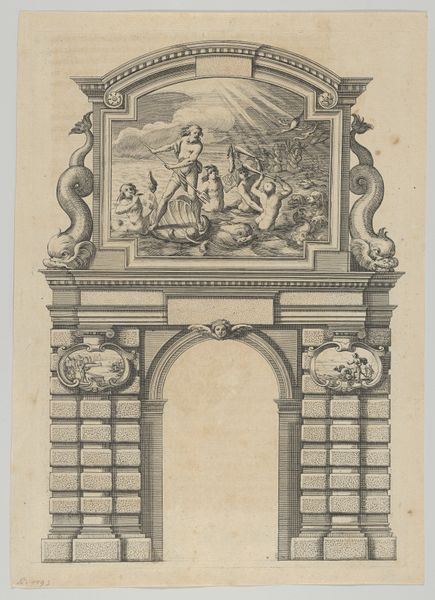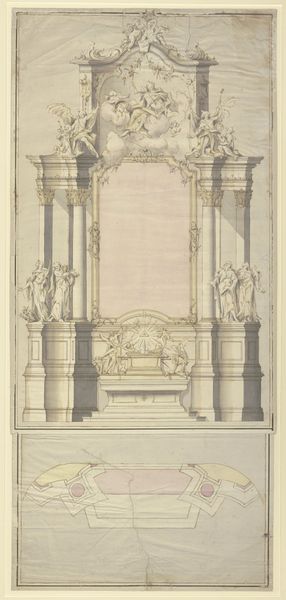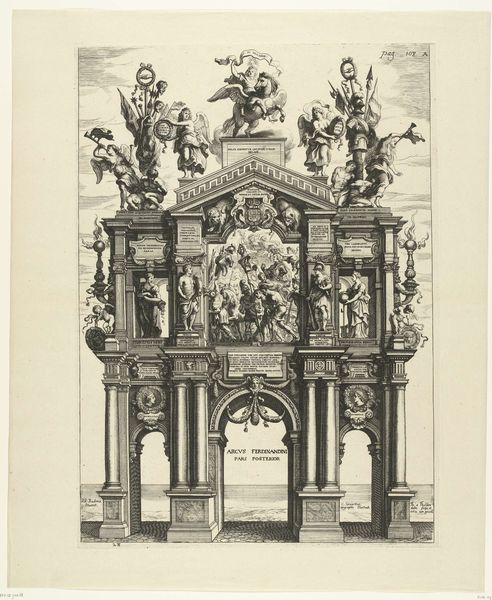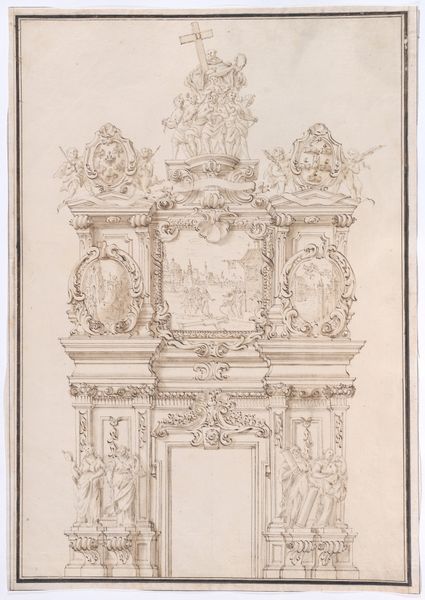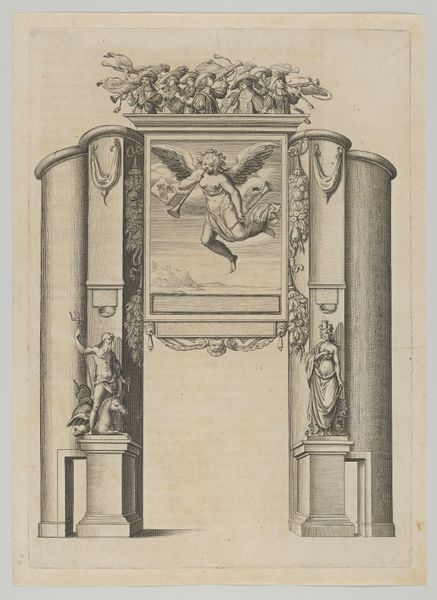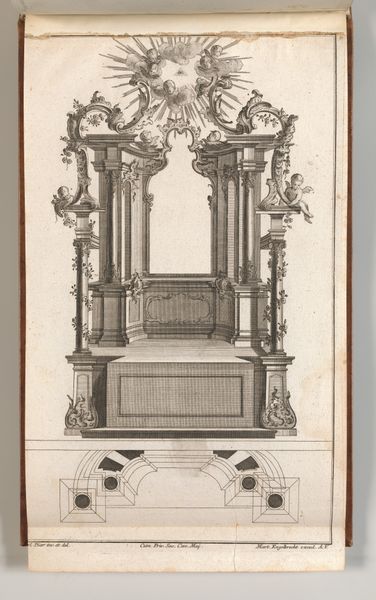
Triumphal arch, from 'Éloges et discours sur la triomphante réception du Roy en sa ville de Paris ...' by Jean-Baptiste de Machault 1629
0:00
0:00
drawing, print, engraving, architecture
#
drawing
#
baroque
# print
#
landscape
#
figuration
#
arch
#
horse
#
line
#
history-painting
#
engraving
#
architecture
Dimensions: Sheet: 12 3/16 × 9 5/16 in. (30.9 × 23.6 cm) Plate: 11 1/2 × 8 3/4 in. (29.2 × 22.3 cm)
Copyright: Public Domain
Curator: This is Melchior Tavernier's "Triumphal arch, from ‘Éloges et discours sur la triomphante réception du Roy en sa ville de Paris…'," made in 1629. It’s currently housed at the Metropolitan Museum of Art. Editor: My first impression is how ornate the arch is—but also quite regimented in its symmetry. It's as if the city is flexing its civic muscle. I’m struck by how the image conveys the grand scale and pomp of a royal entrance into Paris. Curator: Precisely! The arch serves as a symbolic gateway. Triumphal arches like this were transient architectural structures created for a specific event, like a royal visit. As a print, this becomes a kind of distributed cultural memory. What do you see represented? Editor: We can see prints were key to circulating propagandistic imagery. I imagine countless impressions were made of this work, serving a powerful, material function to proliferate royal power. Beyond the arch, the very medium of engraving signifies labor, precision and repetition of an approved visual. Curator: Exactly. And notice how the symbolic language used to enhance this impression: classical motifs alluding to stability and Roman imperial power are interspersed with period markers. Look above the arch at the cartouche, displaying the king's coat of arms, flags and weaponry. A display of royal power, literally topping the frame. And then down, under the central arch, two statues. Mother and child? Editor: Yes, those are figures embodying royal beneficence – representing dynastic continuity, royal duty and associated virtues. Carved stone meets engraved image…there's a rich dialogue about permanence in this work. All for show. Curator: Absolutely! And don’t forget the figures on horseback in the framed tableau above the archway, with cupids floating above! These scenes allude to key moments and virtues of Louis XIII, rendered through established representational conventions. Editor: So it becomes a container not just for royal pageantry, but these classical allusions also work as cultural legitimization. Each element tells a different facet of that power, bound within this temporary, ultimately disposable form, memorialized through a permanent print. Curator: Tavernier offers a window into the deliberate construction of royal imagery and power. Every component underscores the divine right and authority of the king. Editor: An event transformed into material culture, an enduring document shaped by the press, its labour, its limitations and potentials.
Comments
No comments
Be the first to comment and join the conversation on the ultimate creative platform.
